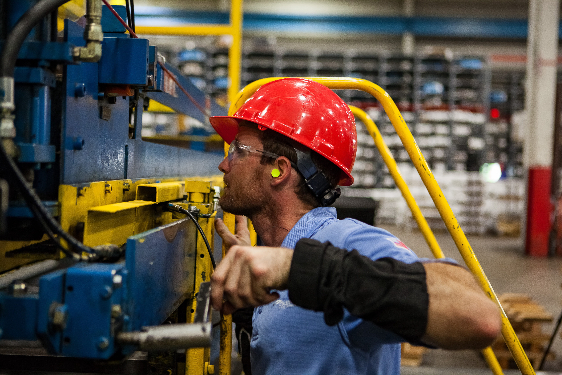- May 17, 2023
- Posted by: David Marshall
- Category: Management, Safety

I’ve said before that Safety is my number one non-negotiable. A safety lapse costs money, but most importantly, it can mean an injury to the people working for you.
A safety lapse can be as benign as someone cutting their finger or as severe as being killed on the job. The range of costs can go from $2 bandage to a couple million dollars in a personal injury lawsuit.
In the wake of severe safety violations, there are all forms of aftershocks because the culture in the company starts to deteriorate. People don’t trust you, you have all the regulatory bodies watching you like a hawk, and you get a reputation for being an unsafe environment.
It’s far better to be obsessive about safety than to allow those kinds of things to happen. And if you don’t pay attention to the small details, the big ones will get you.
What are the costs of an injury?
I once had an experience with a lady who cut the tip of her finger off in our factory. We worked in a fairly remote geographic area and didn’t have a lot of expert medical care around. My rule was that if anyone got hurt, the attention they got was immediate and the best. So she was airlifted to a hospital that could treat that kind of thing. and they sewed the tip of her finger back on.
The airlift cost $60,000, plus there was the cost of her surgery, plus the cost of maintaining her income while she recovered. And she was off for a few weeks while her finger healed.
Getting her to the place to get the right kind of attention was a very costly thing, and we paid all of that. Not that I wasn’t angry for her being stupid in the first place, but I knew that failing to help her in any way would cost us a whole lot more.
The benefit of this is the confidence of the people that if something unfortunate did happen, they would be well taken care of. Which meant they didn’t balk at the safety rules we implemented (well, they implemented), and that minimized the number of incidents that we really had.
How we saved money on workers comp and injuries
 It seems like people would want to abuse our generosity, but it was actually the reverse. I had to remind people that the costs we incurred went into the product, and that included treating injuries. Increased costs made the products more difficult to sell if we couldn’t be at a competitive price. Therefore, our ability to sell the product in the market became a personal thing for each associate.
It seems like people would want to abuse our generosity, but it was actually the reverse. I had to remind people that the costs we incurred went into the product, and that included treating injuries. Increased costs made the products more difficult to sell if we couldn’t be at a competitive price. Therefore, our ability to sell the product in the market became a personal thing for each associate.
We had already opted out of the Texas Worker’s Comp and implemented our own program. Also, everyone who worked for us signed an agreement to arbitrate rather than sue; we never had to go to arbitration with anyone.
Our workers’ comp bill was about $500,000 per year before we changed. After we implemented our own program, it dropped to nearly $0. That’s because we had found in a survey before we implemented our program that 85% of the claims on the old system were bogus.
We had also built into our workers’ comp plan that anyone who joined the company had to have a physical in order to create a baseline for their health. So we could establish whether a person had a pre-existing condition like a bad back or carpal tunnel, we knew whether they were prone to it. And if anyone claimed they got it on the job, we already knew whether it was true or not.
We also videotaped every operation in the facility, so if anyone made a claim, we could prove if it were legitimate or not. So, if someone claimed they were instructed to lift a heavy 55-gallon barrel and injured themselves, we could show that there was equipment available to move it from one place to another. And if they did the wrong way, they did it of their own volition and not at the instruction of the company.
These practices saved us once or twice because we also instituted cross-training, so no one was performing the same repetitive motion for three or four months. So we were able to show that the claims of repetitive motion injuries were also bogus.
I’ve been a manufacturing executive, as well as a sales and marketing professional, for a few decades. Now I help companies turn around their own business, including reducing safety lapses. If you would like more information, please visit my website and connect with me on Twitter, Facebook, or LinkedIn.
Photo credit: PXFuel (Creative Commons 0)

